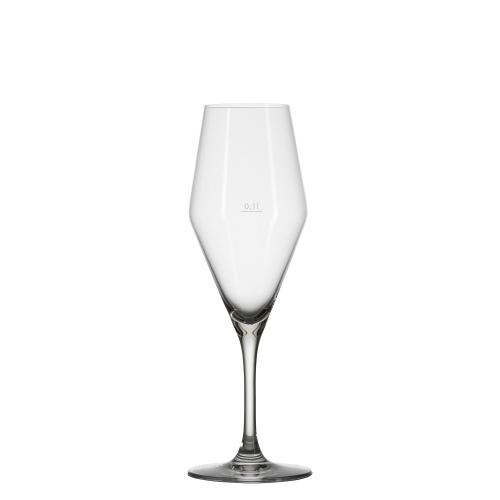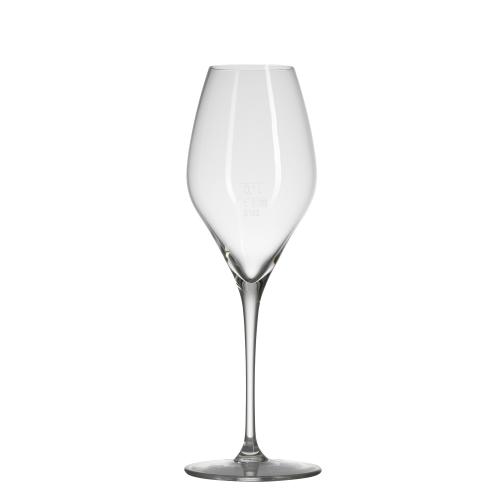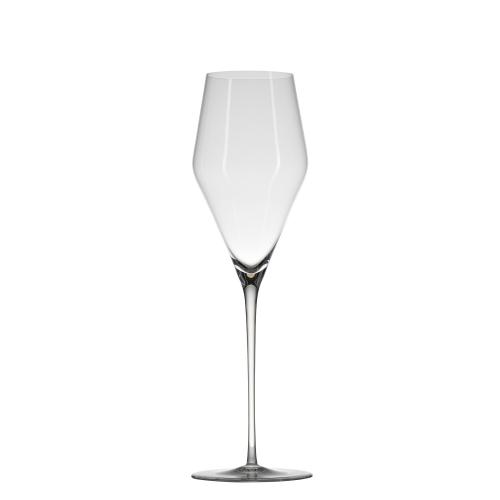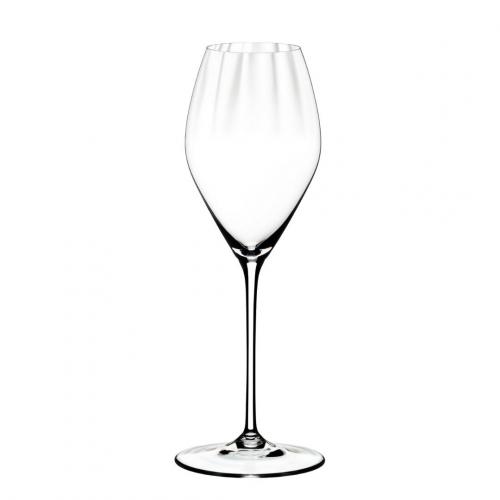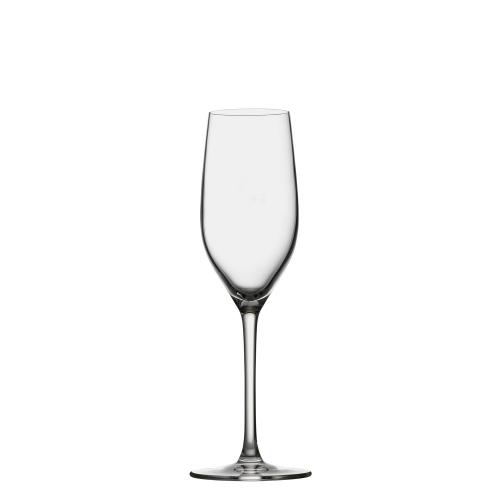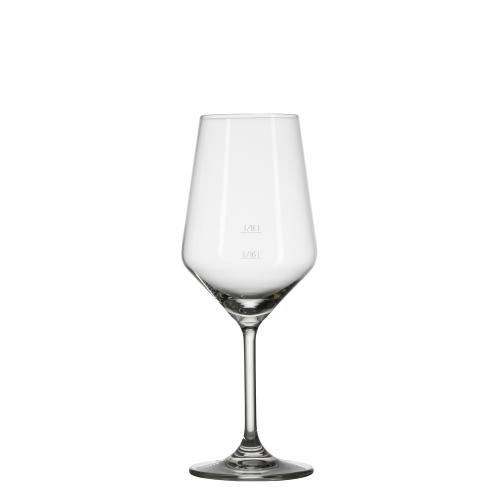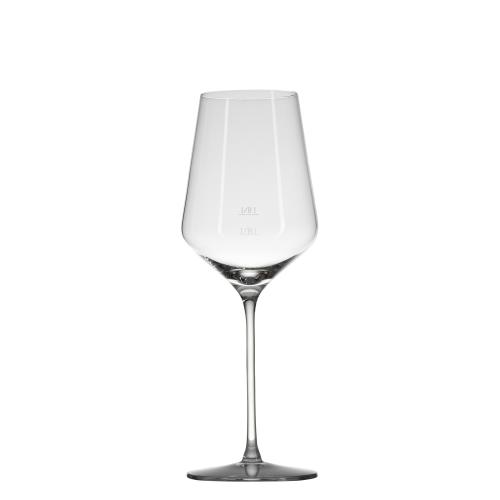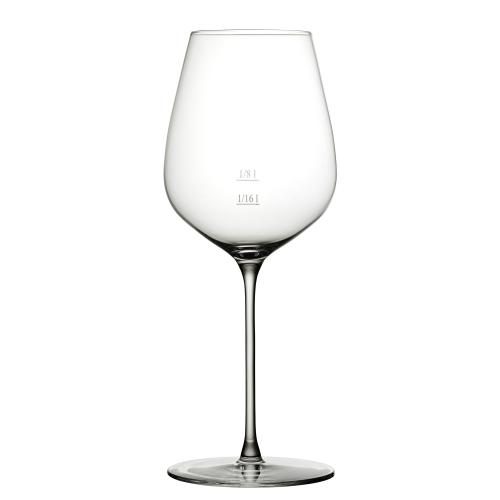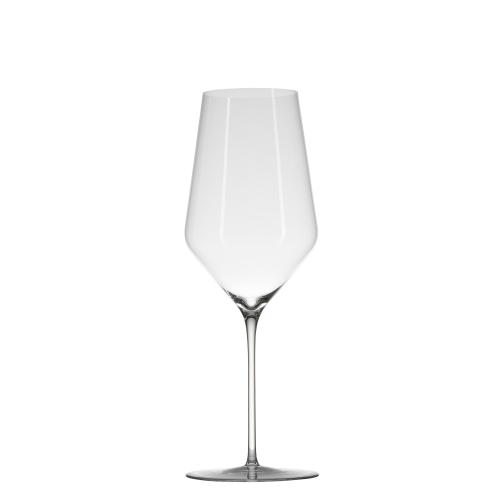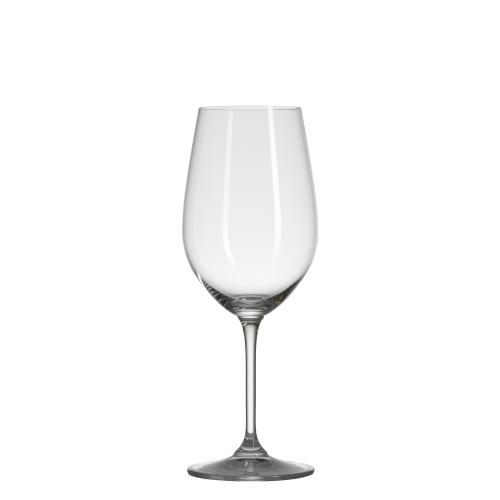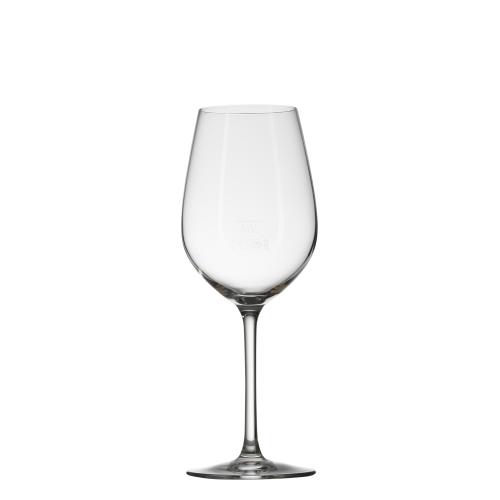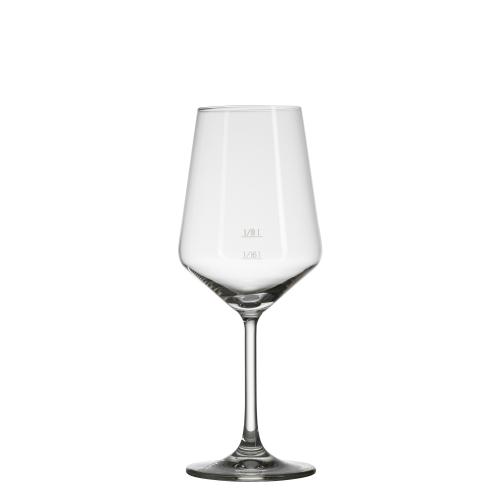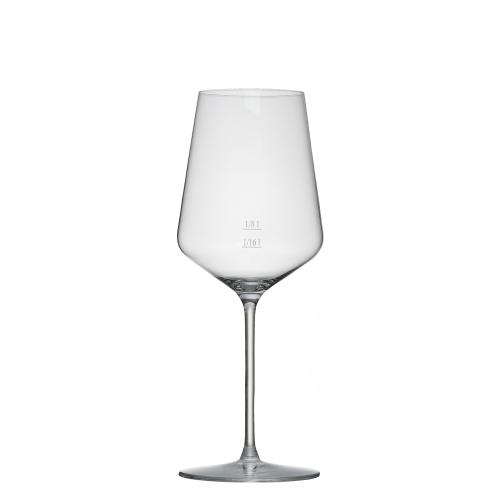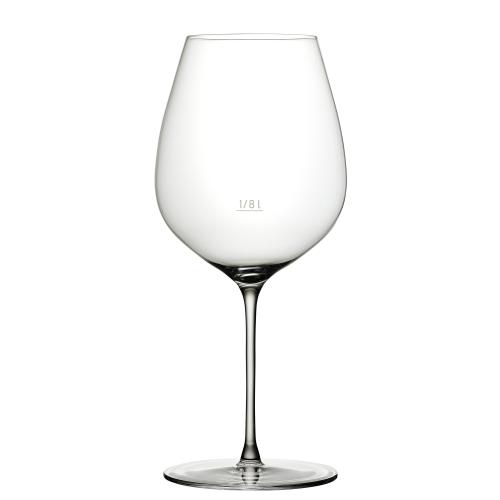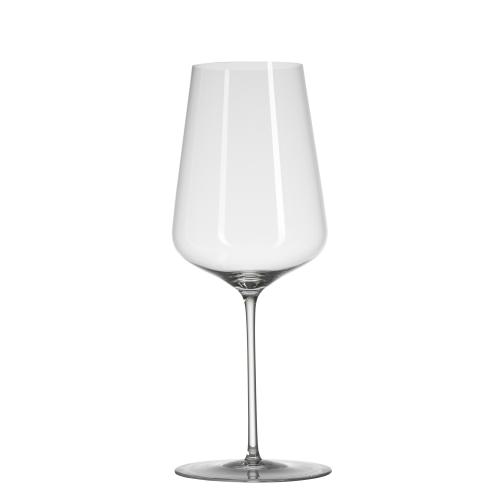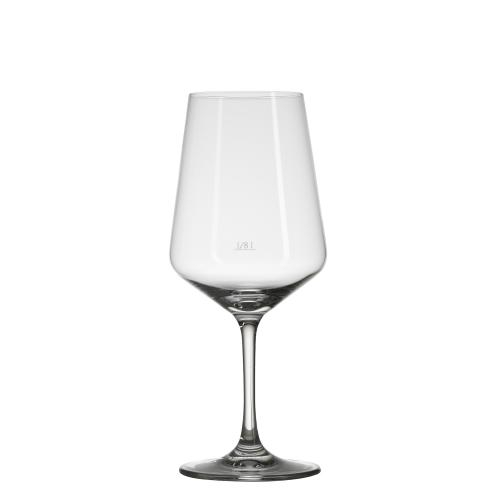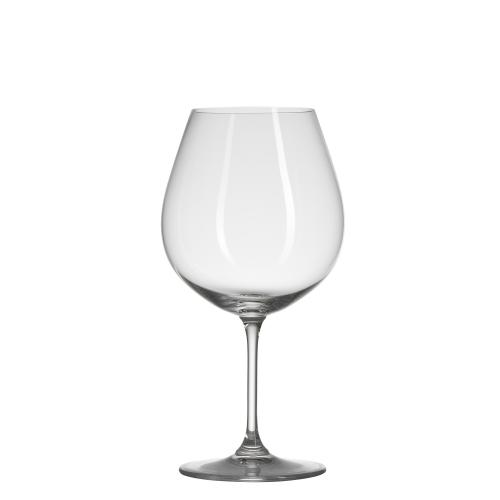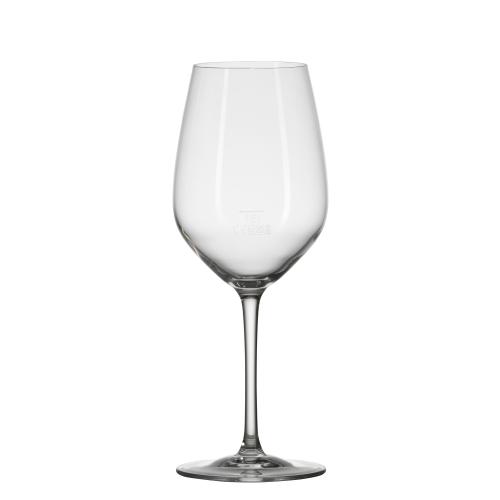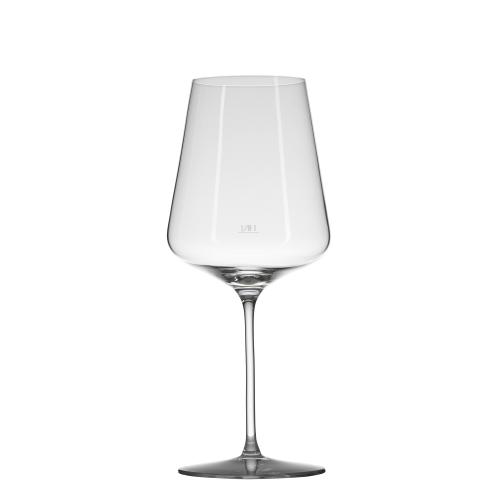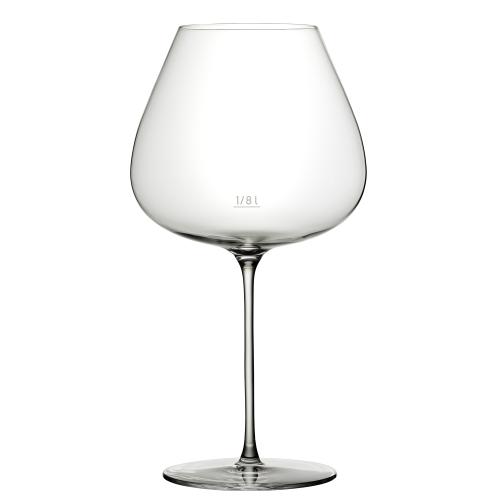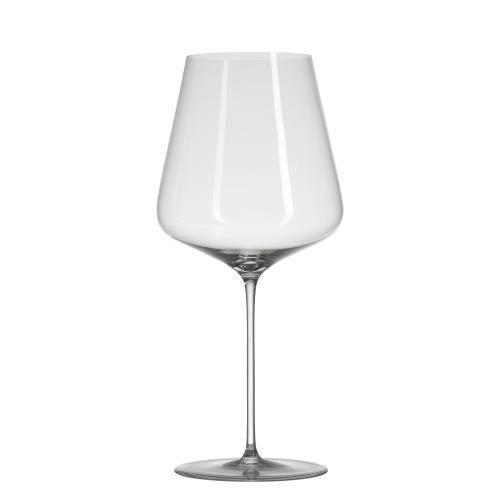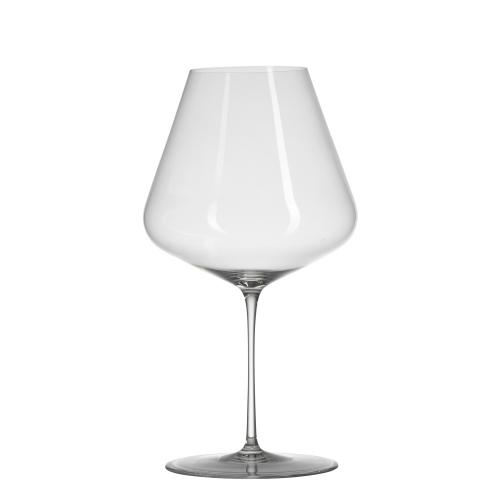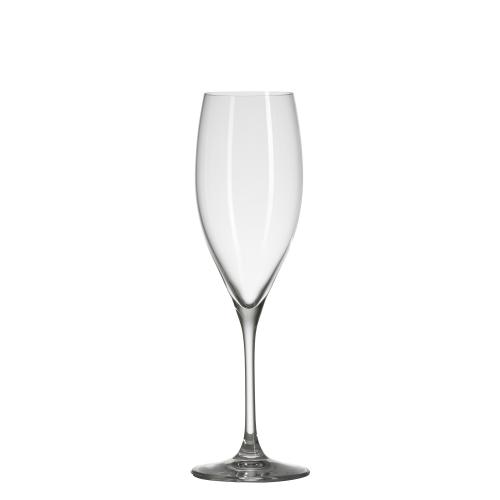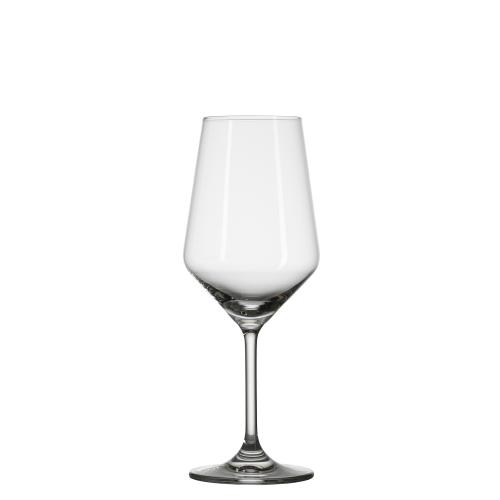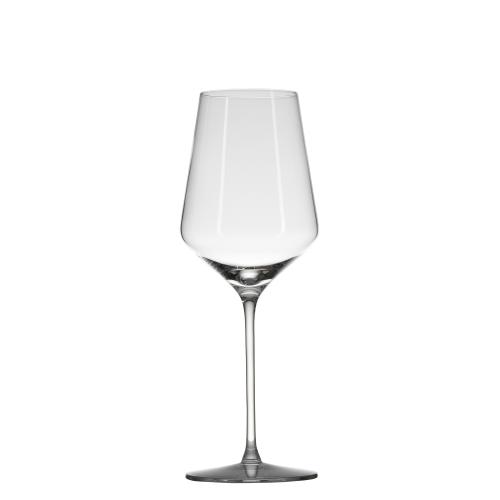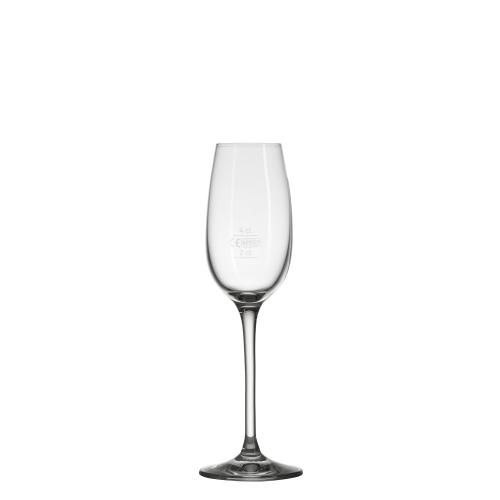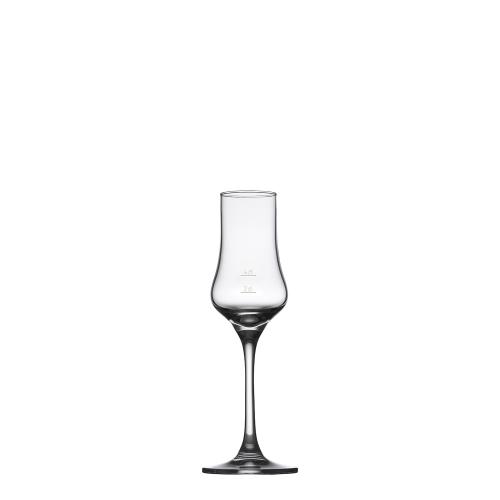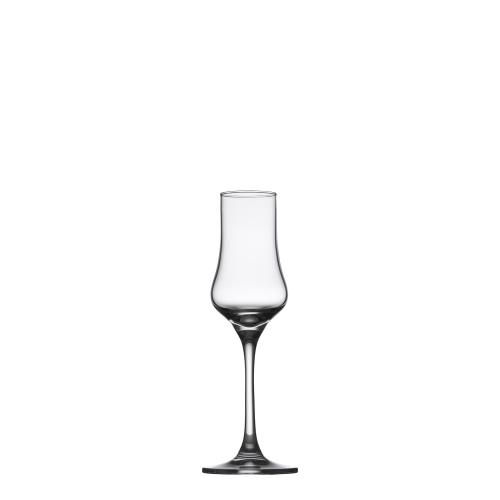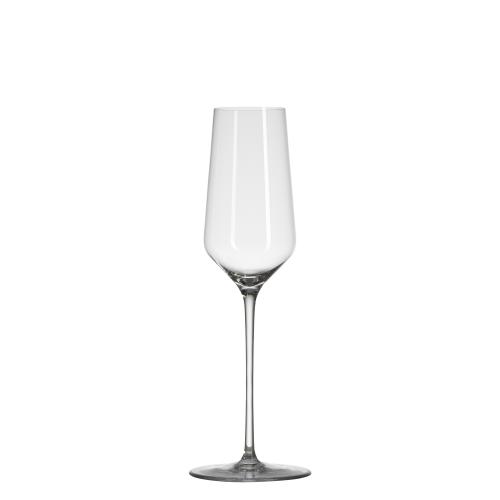Wine glasses are instrumental in bringing out the best in your wine. Choosing the right glass allows a wine to be enjoyed at its fullest. But what factors should be considered when deciding which glass to use?
Wine glass manufacturers have spent many years perfecting their products to enable wine enthusiasts to enjoy the full potential of what’s inside the glass. Below are some key points to consider when deciding which wine glass to use:
- Tulip-shaped glasses are designed to intensify the aromas of the wine. There are currently two trends when it comes to glasses: those that are rounded, and those with an angular bowl.
- Glasses with thin walls and a sharp edge to the rim are essential for bringing out the finesse of the aromas.
- The stem of the glass is also a crucial consideration when it comes to the optimal taste experience. It enables the glass to be easily swirled, and also prevents any unwanted warming from the heat of your hand.
Building up a good inventory of wine glasses may take time, but wine enthusiasts can get off to a good start with high-quality universal wine glasses, which are good all-rounders for any type of wine. However, those who want to experience the multitude of nuances in their wine will need to use the right glass for the right wine.
1. Sekt
The classic teardrop flute is the most common type of Sekt glass. This shape emphasises the fruit and freshness of sparkling wines and allows the tiny bubbles of carbon dioxide rising to the surface to be easily admired. Thanks to the nucleation point etched into the bottom of the glass, the bubbles all rise from the same point and create a more uniform sparkling effect.
2. Classic, fresh white wine
This type of glass, or one of a similar shape, is a must-have for any wine connoisseur. It is best suited to fruity, light- to medium-bodied, dry white wines. Ideal wines to drink from this glass include Welschriesling, Riesling, Grüner Veltliner, Roter Veltliner, Gemischter Satz and any of the Pinots. The character of tangy, aromatic wines (Sauvignon Blanc, Muskateller, Scheurebe, Traminer, Müller-Thurgau, etc.) or a zesty Schilcher is also enhanced by this type of glass. Provided that the glass is not too large, the tulip shape enhances the bouquet. If you only want to use one type of high-quality glass for wine, this shape is the best all-rounder for both whites and reds.
3. Premium white wines
The classic glass for mature or full-bodied white Pinot wines is suitable for premium whites that have been matured in barriques (especially Chardonnay). However, it also lends itself to other dense white wines such as complex, mature Grüner Veltliners, which have a powerful body and require a wide glass to develop fully. The Burgundy glass described below can also be used for rare, powerful wines.
Find the right glasses:
4. Rosé
Rosé is also best served in a glass that is not too wide and tapers towards the top as this concentrates the aromas of the wine. This type of glass, either with or without a flared lip, ensures that the rosé wine flows directly to the taste zones of the tongue, emphasising the delicate interplay of fruit and acidity.
5. Fruity red wines
A medium-sized glass in this shape or similar is a good all-rounder for red wines. The concentration of fragrances in this type of glass is not as extreme as in a Burgundy glass, for example. The fragrance rises slowly to the nose in these glasses, allowing the drinker to discern the bouquet more precisely. They are ideal glasses for classic Blaufränkisch, Zweigelt and Blauer Portugieser wines.
6. Premium red wines
As with the smaller universal glass, the bowl of a large Bordeaux glass is slightly bulbous at the base and tapers towards the top. This shape allows the bouquet to concentrate elegantly, without being too intense. Its large capacity makes this glass ideal for Große Reserve wines produced from Blaufränkisch, Zweigelt, Cabernet Sauvignon, Merlot or Syrah, or full-bodied cuvée blends of these varieties. The bouquet of these wines, which are often matured in barriques, develops to perfection in this type of glass.
Full-bodied Pinot Noirs, as well as other premium red wines with complex bouquets and somewhat higher acidity, require a large, bulbous glass so that the aroma can develop as fully and as quickly as possible, concentrating directly above the surface of the wine. The aroma should be enjoyed before taking the first sip. Very full-bodied wines can also be drunk out of a Burgundy glass. This type of glass lends itself perfectly to Pinot Noir and St. Laurent wines, as well as a few Blauburgers and mature, particularly complex Blaufränkisch wines with no distinct wood notes. The shape of these glasses is also suitable for alternative wine styles, such as orange wine.
7. Sweet wines
Premium sweet wines have an extremely intense bouquet, which is further heightened by the influence of noble rot (Botrytis cinerea). This is usually offset by a relatively low alcohol content in relation to the extract. The appreciation of the bouquet can therefore be enhanced to perfection with a heavily tapered glass. Options here include small, tulip-shaped glasses, universal glasses and special glasses with an inverted pear shape.
Find the right glasses:
3. Große Weißweine
Das klassische Glas für gereifte bzw. körperreiche weiße Burgunder eignet sich für große Weißweine mit Barriqueausbau (speziell Chardonnay), aber auch für andere kräftige Weißweine, z. B. komplexe, gereifte Grüne Veltliner, deren wuchtiger Körper ein entsprechend weites Glas zur Entfaltung benötigt. Man kann für rare, kraftvolle Weine auch das unten beschriebene Burgunder-Rotweinglas verwenden.
4. Rosé
Auch für Roséweine eignet sich ein Glas mit nicht zu breitem und sich nach oben hin verjüngendem Kelch, das die Duftnoten des Weines konzentriert. Ein solches Glas mit oder ohne Kante garantiert auch einen präzisen Fluss des Rosé-Weins auf die Geschmackszonen der Zunge, wodurch sein feines Frucht- und Säurespiel betont wird.
5. Fruchtige Rotweine
Diese oder ähnliche Formen in mittlerer Größe sind für Weiß- und Rotweine universell einsetzbar. Bei dieser Form ist eine Konzentration der Duftstoffe nicht so extrem wie beispielsweise beim Burgunder-Glas. Der Duft steigt langsam zur Nase hoch und lässt die Bukettstruktur besser ergründen. Passende Weine sind beispielsweise klassisch ausgebaute Blaufränkisch, Zweigelt oder Blaue Portugieser.
6. Große Rotweine
Wie beim kleineren Universalglas ist der Kelch dieses großen Bordeauxglases am Boden leicht bauchig, um sich nach oben zu verjüngen. Dadurch ergibt sich eine elegante, aber nicht zu starke Konzentration des Buketts. Aufgrund des großen Volumens eignet sich dieses Glas speziell für große Reserven der Sorten Blaufränkisch, Zweigelt, Cabernet Sauvignon, Merlot, Syrah oder die großen Cuvées aus diesen Sorten. Die Bukettstruktur dieser oft im Barrique ausgebauten Weine kommt in diesem Glas optimal zur Entfaltung.
Große Pinot Noirs, aber auch andere anspruchsvolle, feine Rotweine mit komplexem Bukett und etwas höherer Säure verlangen ein großes, bauchiges Glas, damit sich der Duft möglichst voll und rasch entfalten und sich unmittelbar über der Oberfläche des Weines konzentriert sammeln kann. Bevor man trinkt, genießt man zuerst den Duft. Für ganz große Gewächse kann man auch den Burgunder-Pokal verwenden. Passende Weine für diesen Glastyp sind beispielsweise Blauburgunder/Pinot Noir, St. Laurent, eventuell Blauburger und besonders vielschichtige, gereifte Blaufränkisch ohne spürbare Holznote. Gläser mit dieser Form eignen sich auch für alternative Weinstile wie z. B. Orange Wine.
7. Süßweine
Große Süßweine haben eine überaus intensive Bukettstruktur, die durch den Einfluss der Edelfäule (Botrytis cinerea) noch zusätzlich potenziert wird. Dem steht meist ein im Verhältnis zum Extrakt relativ geringer Alkoholgehalt gegenüber. Daher kann mit einem nach oben hin stark verjüngten Glas das Buketterlebnis perfekt gesteigert werden. Die Bandbreite der Möglichkeiten reicht von kleinen Tulpengläsern über das Universalglas bis hin zu Spezialkelchen in umgekehrter Birnenform.

